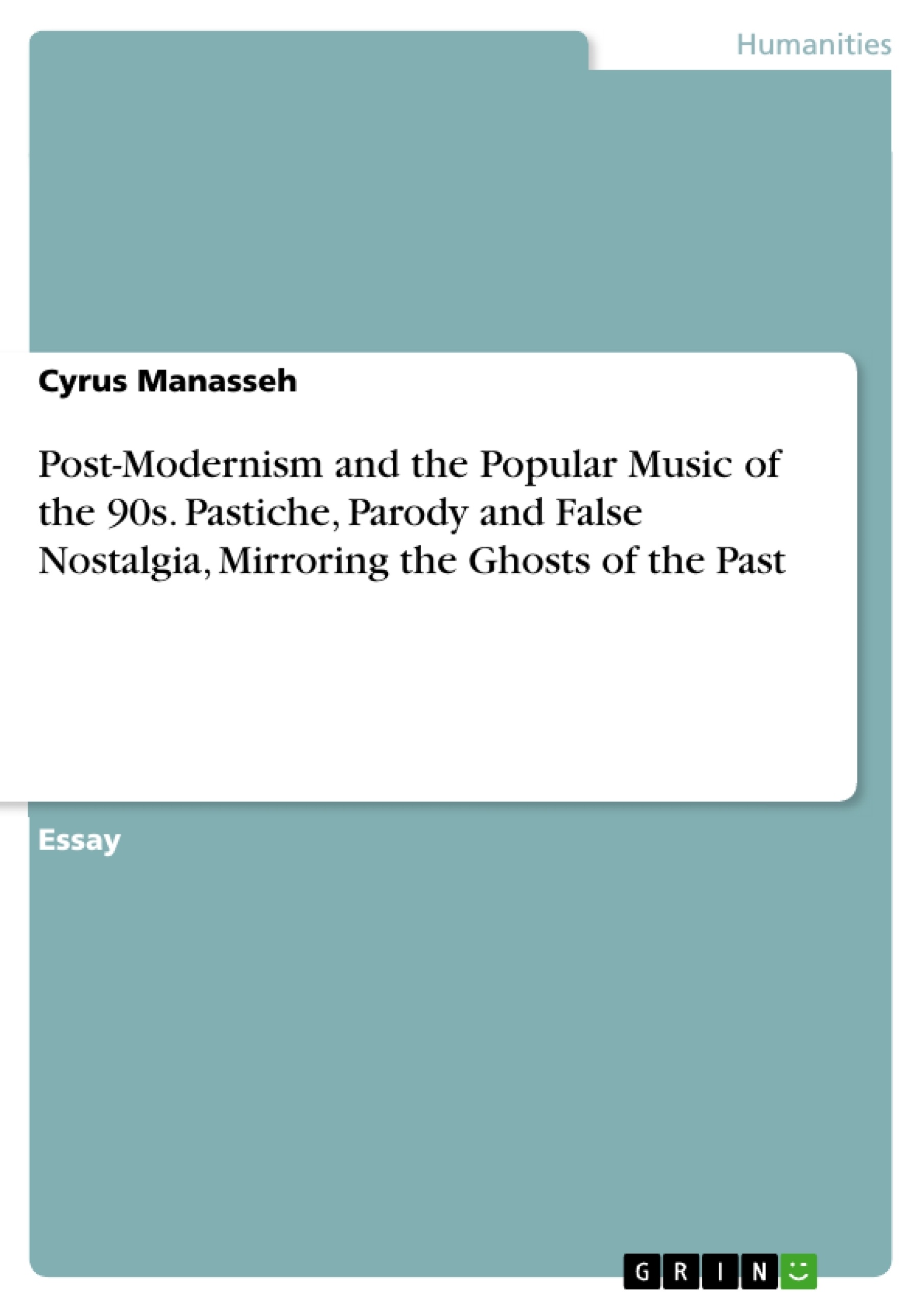There is much in the culture that seems mystifying especially if we look at what had happened in the sphere of popular music in the 1990s with regard to music, fashions and hairstyles. In fact, the period saw the strong and more tangible introduction of the post-modern age and thinking into popular culture, which saw mainstream and alternative music styles become somewhat joined together in the minds of many. The 1990s began an age when everyone said that everything should be accepted resulting in a pick n’ mix culture appearing, which had seemed to come out of nowhere in a sense, yet was all around us. Based on my lectures for a Media and Journalism course I held at the University of Rome, this essay attempts to identify some of the characteristics of the 1990s in popular music in relation to Anglo Saxon countries/cultures and tries to offer an explanation of why they may have appeared and existed.
Table of Contents
- Post-Modernism and the Popular Music of the 90s: Pastiche, Parody and False Nostalgia, Mirroring the Ghosts of the Past
- The Late 60s and Early 70s
- Social Change and the Influence of Music
- Criticism of Society
- The Appropriation and Re-appropriation of the Old into the New
- Architecture as an Example of Post-Modernism
- The Ghostly Emulation, Parody and False Nostalgia of the Past
Objectives and Key Themes
This text explores the influence of post-modernism on popular music of the 1990s, specifically examining the phenomenon of pastiche, parody, and false nostalgia. The author analyzes how 90s musicians borrowed heavily from earlier musical styles, particularly the late 60s and early 70s, creating a sense of nostalgia that was not rooted in genuine experience.
- The rise of postmodernism and its impact on popular music.
- The use of pastiche, parody, and false nostalgia as stylistic techniques in 90s music.
- The influence of the late 60s and early 70s music on 90s popular music.
- The role of technology in shaping the sounds and consumption of music in the 90s.
- The social and cultural context of the 90s, including the prevalence of consumerism and acceptance of diverse musical styles.
Chapter Summaries
The text begins by outlining the significant shift in popular music during the 1990s, marked by the fusion of mainstream and alternative styles, and the adoption of new technological recording tools. The author then explores the phenomenon of "false nostalgia," arguing that many 90s musicians, while drawing inspiration from past eras like the British Invasion, were not attempting to recreate the authentic past but rather a romanticized version of it.
The text further examines the social and cultural context of the late 60s and early 70s, noting the parallels with the 90s in terms of social change, criticism of institutions, and a desire to challenge the status quo. The author points out that the postmodern era, with its embrace of eclecticism and hybridity, created an environment where borrowing from the past became commonplace, even in architecture.
Keywords
The central keywords of this text include postmodernism, pastiche, parody, false nostalgia, popular music, 1990s, 1960s, 1970s, British Invasion, cultural appropriation, technology, social change, and consumerism. The text focuses on the intersection of these concepts, exploring how postmodernism manifested in 90s music through the use of pastiche, parody, and a reinterpretation of past musical styles, particularly those from the late 60s and early 70s.
- Citar trabajo
- Professor PhD, Celta, BA Hons. Cyrus Manasseh (Autor), 2019, Post-Modernism and the Popular Music of the 90s. Pastiche, Parody and False Nostalgia, Mirroring the Ghosts of the Past, Múnich, GRIN Verlag, https://www.grin.com/document/900491



